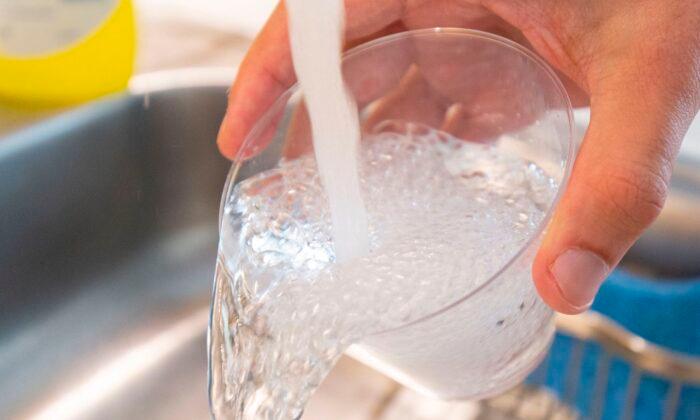Nearly half of the tap water in the United States may have what are known as “forever chemicals,” also referred to as per- and poly-fluoroalkyl substances (PFAS), a study suggests.
USGS researchers determined by modeling that, on average, at least one PFAS is detected in about 45 percent of U.S. tap water samples.

“USGS scientists tested water collected directly from people’s kitchen sinks across the nation, providing the most comprehensive study to date on PFAS in tap water from both private wells and public supplies,” USGS research hydrologist Kelly Smalling, the study’s lead author, said in a statement on July 5.
“The study estimates that at least one type of PFAS—of those that were monitored—could be present in nearly half of the tap water in the U.S. Furthermore, PFAS concentrations were similar between public supplies and private wells.”
PFAS are colloquially referred to as “forever chemicals” because they don’t easily break down in the human body or the environment, and some of them never fully break down. These substances are known for their resistance to grease, oil, water, and heat, and as such, can be used in a wide range of products, including non-stick cookware, stain- and water-resistant fabrics and carpets, as well as cleaning products, paints, water repellents, and fire-fighting foams.

According to the USGS, the study marks “the first time anyone has tested for and compared PFAS in tap water from both private and government-regulated public water supplies” on a broad scale throughout the United States.
More Risk of PFAS Exposure in Urban Areas
Urban areas are more at risk of PFAS exposure compared to rural areas, with the forever chemicals detected in over 70 percent of urban areas or areas with a known history of PFAS contamination, compared to 8 percent of rural areas. Researchers observed the exposure in urban areas including around the Great Plains, Great Lakes, Eastern Seaboard, and Central/Southern California regions.The most frequently detected compounds in this study were PFBS, PFHxS, and PFOA.
USGS researchers estimate the probability of not detecting PFAS above their detection limits is about 25 percent in urban centers or areas with a known history of PFAS contamination and more than 75 percent in rural areas.
The EPA regulates public water supplies, while homeowners are responsible for testing and treating private water supplies.
“Those interested in testing and treating private wells should contact their local and state officials for guidance,” the USGS said in its release. “Testing is the only way to confirm the presence of these contaminants in wells.”




